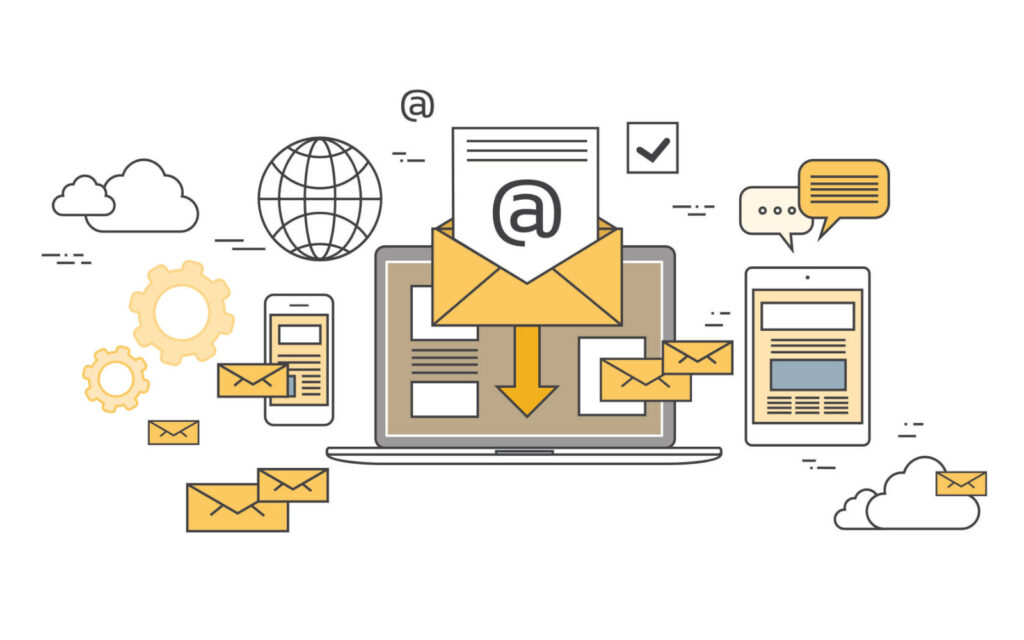Email marketing is a highly effective digital marketing strategy that can help businesses connect with their audience, build relationships, and drive sales. According to a recent survey by HubSpot, email is the third most influential source of information for B2B audiences, following colleague recommendations and industry thought leaders.
However, with so many emails flooding inboxes every day, it can be challenging to stand out and get your message across. To help you unlock the power of Email marketing, here are some strategies for engaging your audience and boosting conversions.
Build a targeted email list
The first step to successful Email-marketing is building a targeted email list. This means collecting email addresses from individuals who have expressed interest in your brand or industry. You can do this by offering valuable content such as e-books, webinars, or whitepapers in exchange for email sign-ups. You can also collect email addresses through social media and other online channels.
Personalize your emails
Personalization is key to successful Email-marketing. Use your subscriber’s name and any other relevant information you have about them to personalize your emails. This can include personalized subject lines, greetings, and content tailored to their interests and preferences.
Create engaging subject lines
The subject line is the first thing your subscribers see when they receive your email. Make sure it is attention-grabbing and relevant to the content inside. A good subject line should be concise, and clear, and convey the value of your email.

Use compelling visuals
Visuals can help make your emails more engaging and memorable. Use high-quality images, videos, and graphics to break up your text and make your emails visually appealing. But make sure your visuals are relevant to your message and enhance the overall user experience.
Provide valuable content
The content of your email is what will keep your subscribers engaged and coming back for more. Provide valuable and informative content that meets the needs and interests of your audience. This can include educational content, industry news and updates, special offers and promotions, or exclusive content.
Include a clear call-to-action (CTA)
A clear call-to-action is essential to drive conversions from your Email-marketing efforts. Make sure your CTA is prominent and stands out visually. Use action-oriented language and make it clear what you want your subscribers to do next.
Test and optimize your emails
Testing and optimizing your emails is essential to improving your Email-marketing performance over time. Test different subject lines, content, visuals, and CTAs to see what resonates best with your audience. Use analytics to track open rates, click-through rates, and conversions, and adjust your strategy accordingly.
Segment your email list
Segmentation is the process of dividing your email list into smaller, more targeted groups based on demographics, behavior, or interests. This allows you to send more relevant and personalized emails that resonate with each segment, resulting in higher engagement and conversions.
Automate your emails
Email automation allows you to send targeted and personalized emails to your subscribers based on their behavior or interests. This can include welcome emails, abandoned cart emails, birthday emails, and more. Automation saves time and effort while also improving the effectiveness of your Email-marketing.
Follow best practices
Following best practices is essential to ensuring the success of your Email-marketing campaigns. These include using a clear and recognizable sender name and email address, avoiding spam trigger words and phrases, including an unsubscribe link, and complying with data protection and privacy laws.
Analyze and interpret email metrics
Email metrics are important to track and analyze because they can provide insights into the effectiveness of your email campaigns. These metrics include open rates, click-through rates, bounce rates, and conversion rates. By analyzing these metrics, you can gain a better understanding of what is working and what isn’t, and make data-driven decisions to improve your email campaigns.

Stay up-to-date with Email-marketing trends
Email-marketing is a constantly evolving field, with new trends and best practices emerging all the time. It’s important to stay up-to-date with the latest trends and incorporate them into your Email-marketing strategy. Some current trends include interactive emails, gamification, and user-generated content.
Use A/B testing
A/B testing, also known as split testing, involves testing two different versions of an email to see which one performs better. This can include testing different subject lines, content, visuals, and CTAs. A/B testing can help you optimize your email campaigns and improve their effectiveness over time.
Don’t forget about mobile optimization
More and more people are checking their emails on mobile devices, so it’s essential to optimize your emails for mobile. This means using a responsive design that adjusts to the size of the screen, using clear and legible fonts, and using concise and scannable content.
By implementing these strategies and best practices, you can create effective Email-marketing campaigns that engage your audience and drive results. Remember, Email marketing is not a one-time effort but rather an ongoing process that requires continuous testing, optimization, and improvement. With dedication and persistence, you can unlock the full potential of Email-marketing for your business.
In conclusion, Email marketing is a powerful tool for building relationships with your audience and driving sales. By building a targeted email list, personalizing your emails, creating engaging subject lines and visuals, providing valuable content, including a clear call-to-action, and testing and optimizing your emails, you can unlock the full potential of Email-marketing and achieve your marketing goals.
















